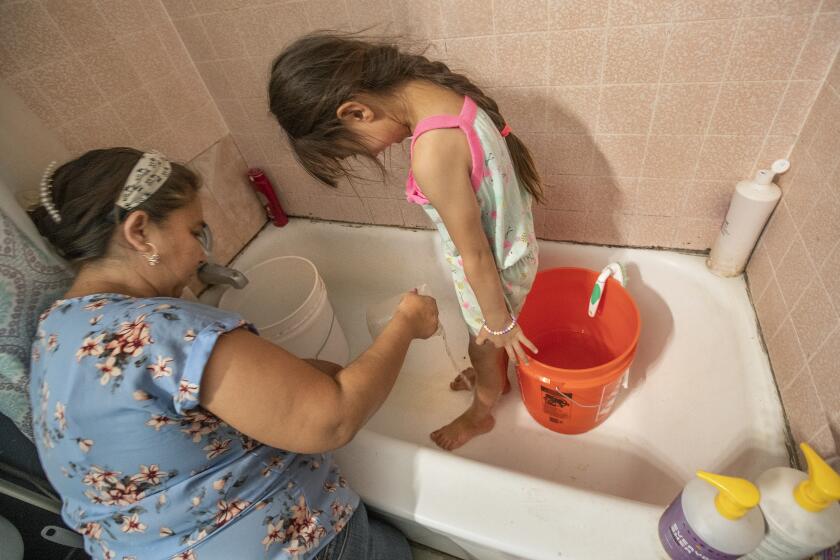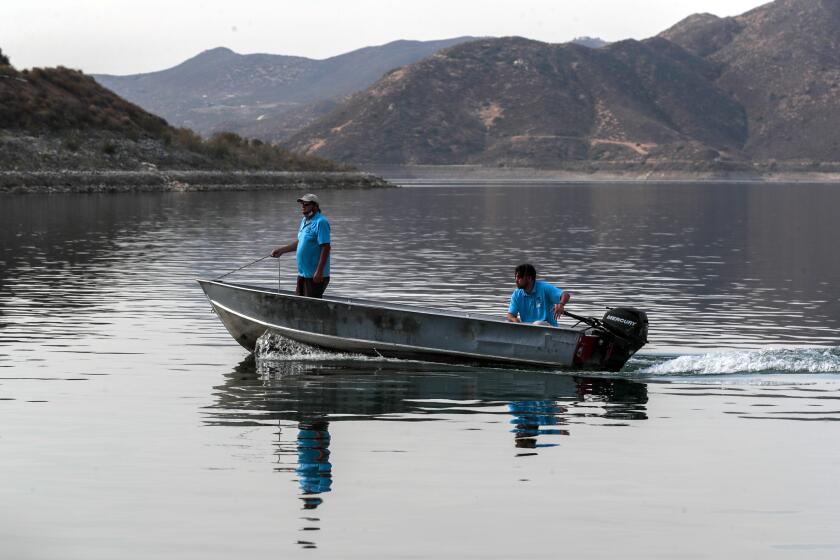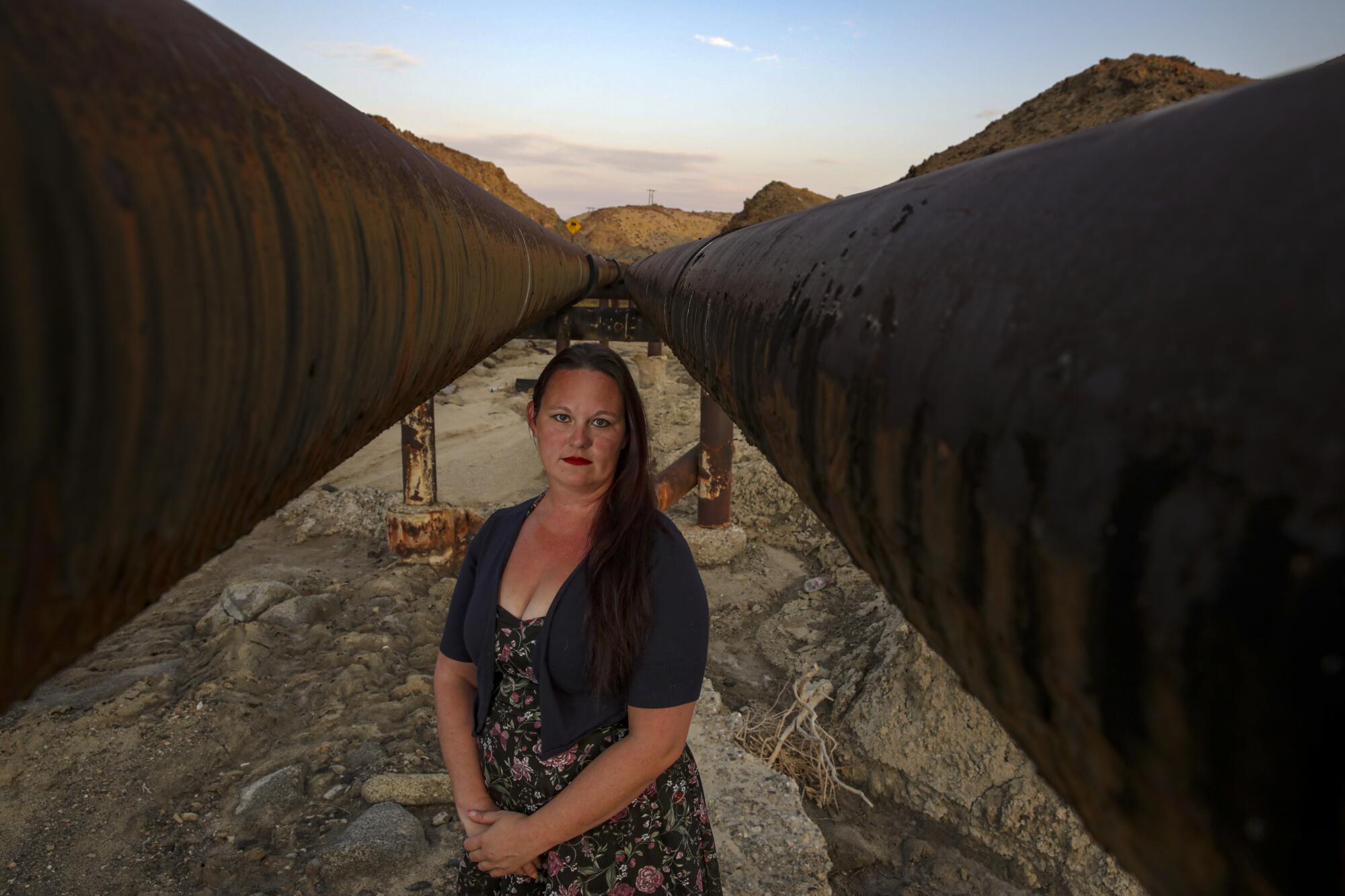
- Share via
TRONA, Calif. — On the northern edge of the Mojave Desert, a new trauma has awakened old concerns: What happens if a town’s water gets shut off?
The question keeps Danny Tolbert awake most nights.
Two years ago his taps ran dry after a 7.1 earthquake nearly brought down his house and community. That was three months before his stroke, before he learned how diseased his heart was.
“I don’t want to die without knowing you’re OK,” he has repeatedly told his wife, Ronnie.
Tolbert, 64, tries to hide his tears from her, and she tries to reassure him. Inside a Sea-Train container parked next to their home, she has stockpiled 42 cases of water.

Good for at least a month, she says, if we’re careful.
But careful isn’t enough for the Tolberts and their neighbors, who are caught up in a water war that threatens their beat-up yet determined town and valley of nearly 1,700 people.
Perched on the edge of a mostly dry salt lake, Trona has no source of clean water and for at least 70 years has relied on groundwater pumped from wells 30 miles away in the Indian Wells Valley.
Two pipelines snake through a dry-wash canyon delivering water to the town’s historic mineral plant, where it is used in the production of soda ash, boron and salt. Any surplus is then treated and sold for residential use.
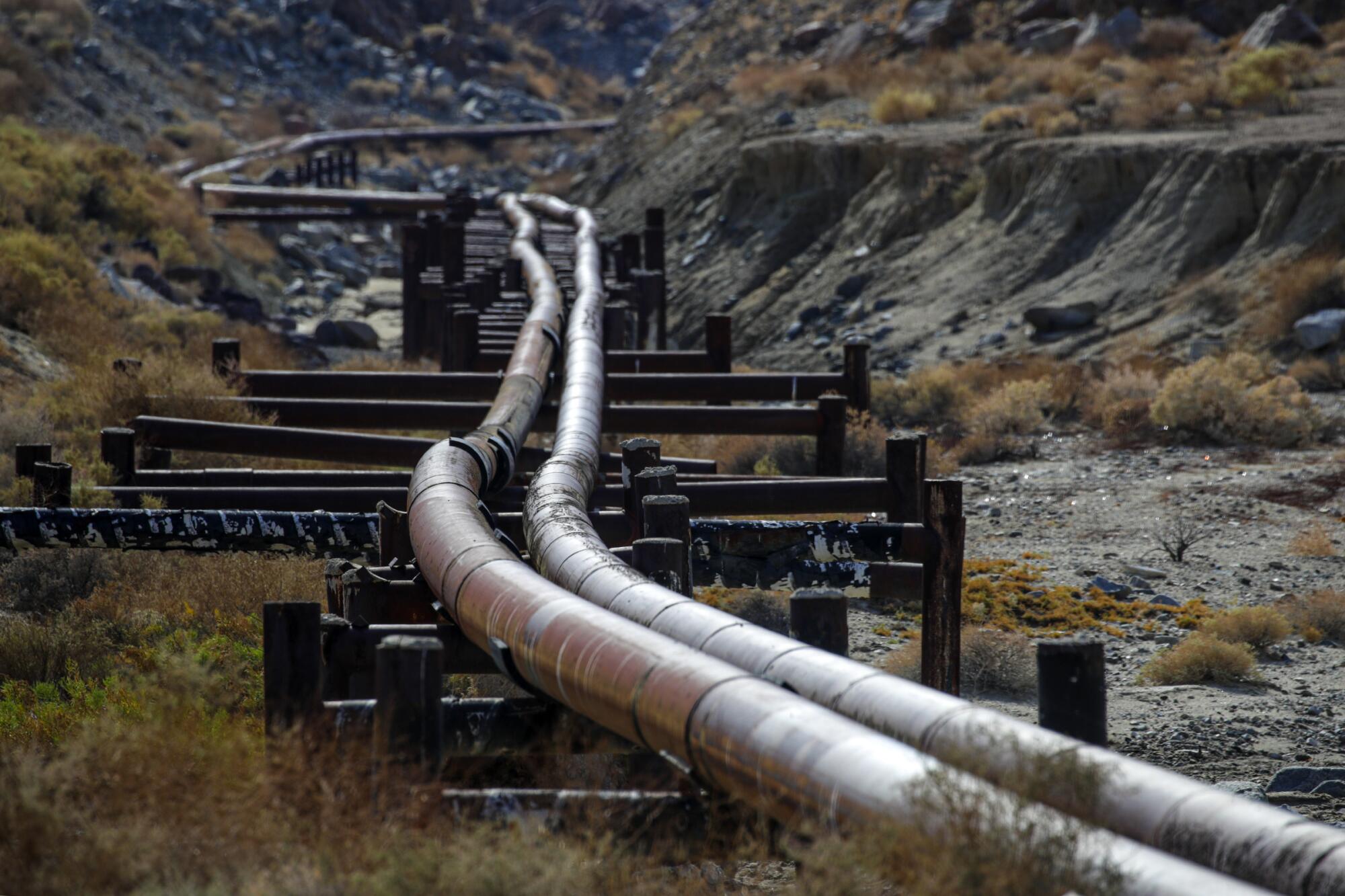
That source of water, however, is in jeopardy due to legislation passed seven years ago in Sacramento to protect aquifers throughout the state.
Protection in the desert isn’t cheap, and a local water agency is ordering the mineral plant to help by contributing roughly $30 million over five years. Or stop pumping.
Lawyers are arguing the matter in court.
The uncertainty is hard on a town as rattled as Trona, and on a Thursday afternoon in late July, Ronnie put on her Trump shirt, said goodbye to Danny and drove to the Elks Lodge. A local activist had called a meeting.
As Ronnie sees it, if the mineral plant loses its water, so does Trona, and their home for 35 years would cease to exist.
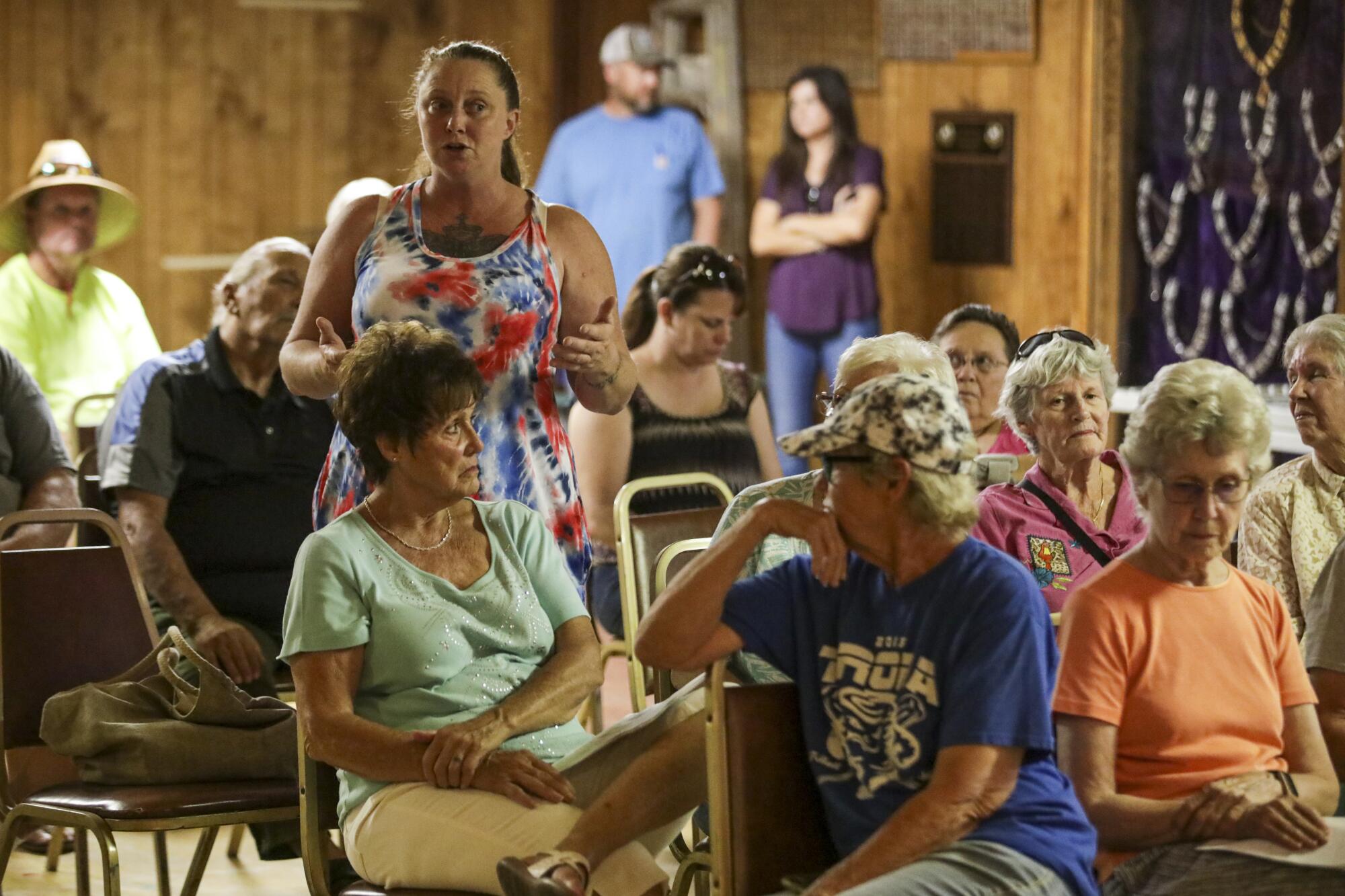
::
Water wars are central to the history of the American West. Although the battle taking place in Trona and the Indian Wells Valley may not be as epic as the wrangling over the Colorado River, the outcome will have implications not just for the Tolberts but for the rest of California.
Once one of the state’s most dependable sources of water, groundwater can account for up to 60% of the state’s supply during a drought.
In an unincorporated sliver of Madera County, the drought parched the natural landscape the Sevilla family once reveled in.
But its reliability was abruptly checked nearly 10 years ago when California was in drought. As rivers dried and reservoirs emptied, more wells were dug, pumping continued, and land surfaces began to sink. Canals cracked, roads buckled, and sediments, once depressed, would no longer be able to store underground water.
In 2014, then-Gov. Jerry Brown signed three bills aimed to protect the state’s groundwater. Collectively they are known as SGMA (pronounced “sigma”) for the Sustainable Groundwater Management Act.
The state Department of Water Resources was given the authority to oversee the new law. Of California’s 515 groundwater basins, it identified 21 that were “critically overdrafted.” The law required those basins to form local groundwater authorities and come up with plans by 2020 to preserve the underground supply by 2040.
Of those 21 basins, the Indian Wells Valley — about 600 square miles south of the Owens Valley — presents a unique challenge, both politically and technically. First, it has neither rivers nor streams nor lakes to draw on; to restore its groundwater, it will have to import water.
Second, the valley straddles three counties — Kern, Inyo and San Bernardino — each with competing interests. The largest city is Ridgecrest, population of 27,000, due largely to the Naval Air Weapons Station China Lake, a massive federal installation exempt from state laws.
And then there is Trona, which lies outside the valley but is dependent upon it.
Despite these hurdles — or because of them — the Indian Wells Valley wasted little time and in 2016 established its groundwater authority, which quickly defined the problem and proposed a solution.
The valley had no choice, said Ron Strand, who served as the general manager for the groundwater authority in 2018 and is currently the city manager for Ridgecrest.
“We’re way behind the curve,” he said. “We have had at least three decades of a declining water table. At what point of time do we take ownership and solve this problem?”
Their actions — and the ensuing controversy — are being closely watched.
Indian Wells Valley has set itself apart “because its groundwater authority moved quickly,” said Anita Milman, an associate professor at the University of Massachusetts who has studied groundwater sustainability and the state’s implementation of its groundwater law.
Diamond Valley Lake, an “inland ocean,” is Southern California’s prime defense against drought.
Other overdrafted basins in the state will eventually have to resolve the same complex issues, she said.
Andrew Ayres of the Public Policy Institute of California agrees. “For years, groundwater provided a reliable source of water for economic growth and activity, and users had open access to that source of water,” he said. With water levels dropping, action is needed, and “addressing that deficit requires making difficult choices.”
Meanwhile, residents of the Indian Wells Valley and Trona resent having to face a future written by legislators in Sacramento and executed by an unelected board of politicians who are deciding the role that agriculture, industry and the military will play in their lives years ahead.
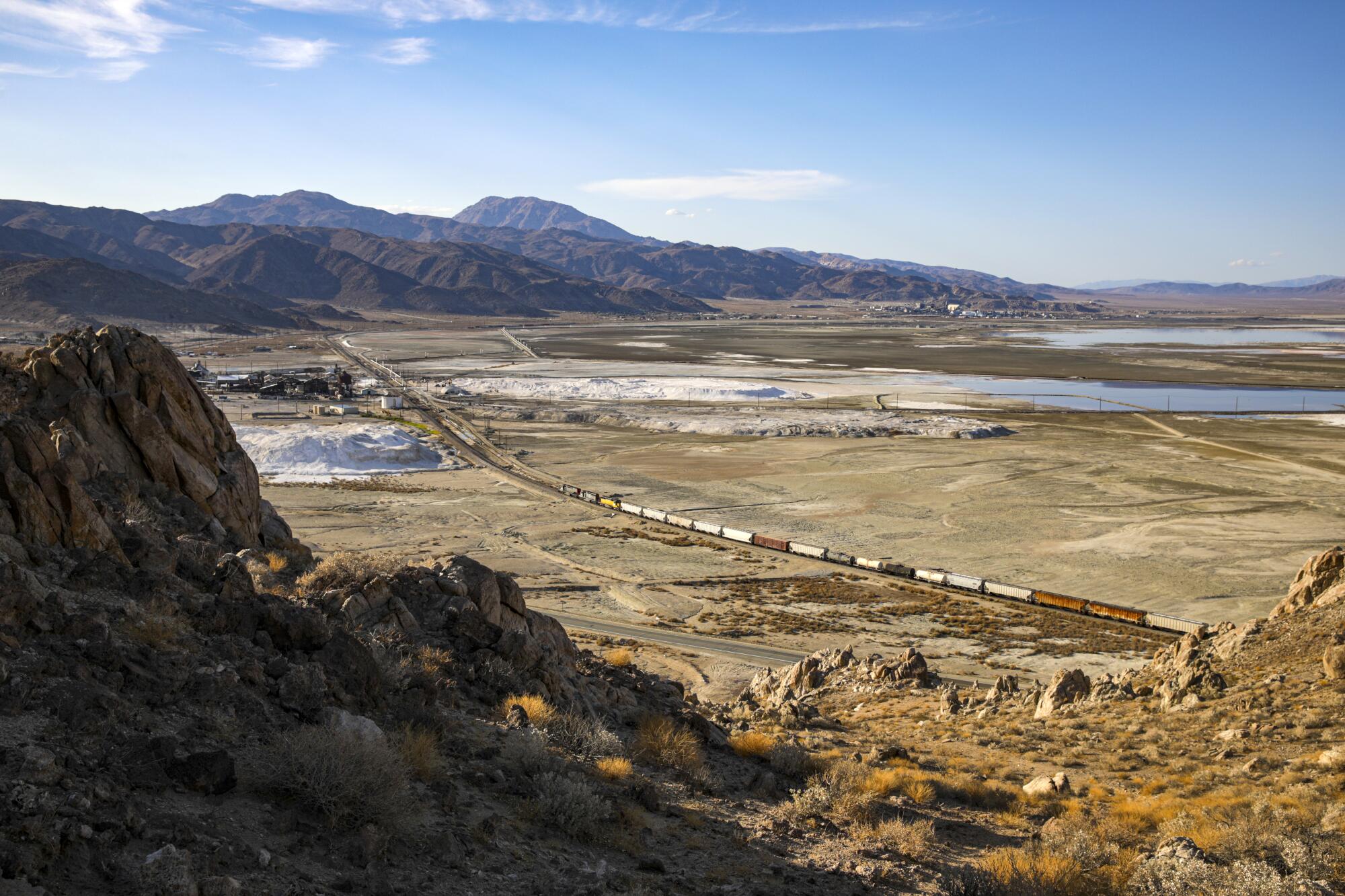
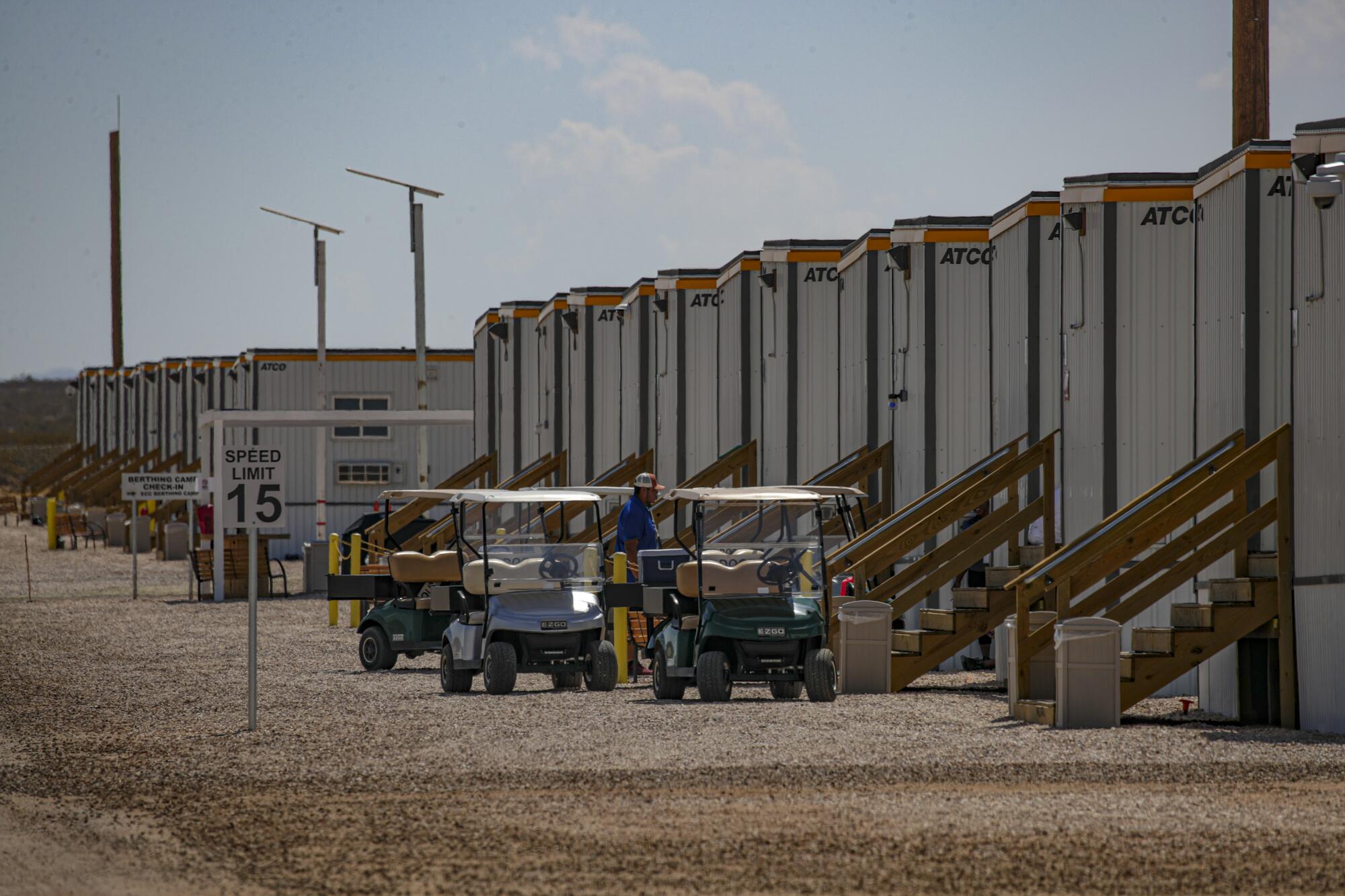
To better understand what’s at stake in the Indian Wells Valley, drive out of town on Highway 178 and turn right on San Bernardino Boulevard.
To the left are long white rows of apartments recently built for contractors working at the Navy base during a $2.7-billion renovation in the aftermath of the earthquake. The apartments, said a Navy spokesperson, can accommodate up to 1,300 residents and will be taken down once the work is completed.
On the right is the city cemetery, Desert Memorial Park, a green and tree-shaded oasis for a little more than 50 years. Today, many of the trees are dying, and most of the grass is gone.
“All of my cemetery has died,” said Debra Holland, who owns the property. “All things that are living are an accident, and everything green is pretty much on its way out.”
The dearth of essential resources — clean water, adequate housing and fair employment wages — has crippled overlooked communities and triggered a slow exodus to bigger places.
In 2015 the original well on the property, which went down 200 feet, went dry, Holland said. She paid $60,000 for a new well, 400 feet deep. Soon the grass, though watered, turned brown, and a white residue began to accumulate around the trunks of the trees.
Analysis revealed that the water was “10 times saltier than what you would turn on at your kitchen sink, and the arsenic level is at a toxic level,” Holland said. Given that the cemetery once had clean water, the high levels of sodium and salt pointed to groundwater contamination, a common result of a depleted water table.
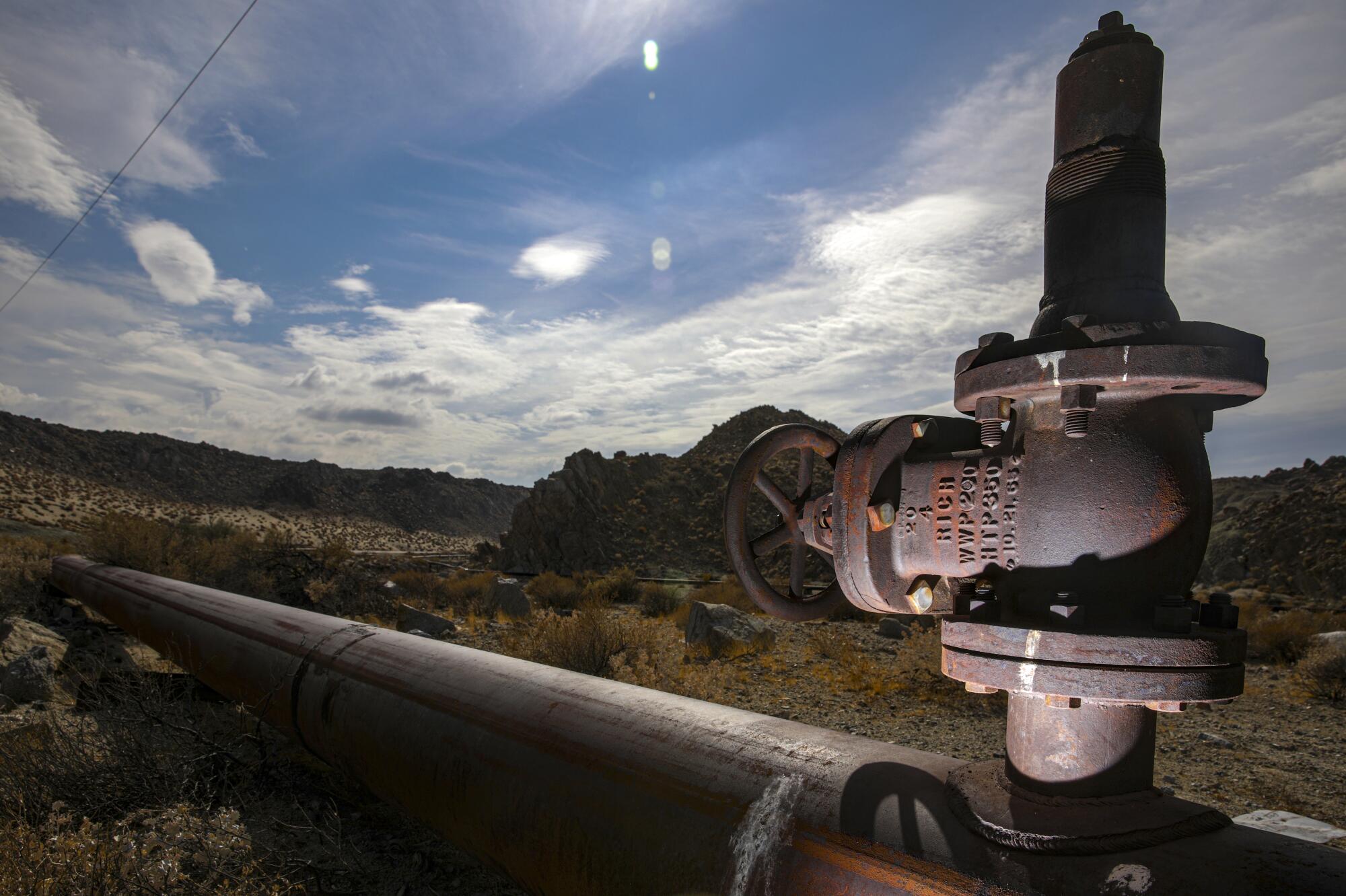
The Indian Wells Valley aquifer is among the most studied in California, and its groundwater authority researched more than 100 years of data. The conclusion could not be ignored, said Keith Lemieux, an attorney representing the authority.
The amount of water flowing into the valley’s underground basin is 7,650 acre-feet per year. Annual usage is about 28,000 acre-feet. Like an overdrawn bank account, the valley was in debt, and if nothing was done, Lemieux said, “we would be out of water in 50 years.”
“All of my cemetery has died. All things that are living are an accident, and everything green is pretty much on its way out.”
— Debra Holland, Desert Memorial Park owner
To replenish the depleted groundwater, the authority set two goals: Purchase an entitlement of water from the State Water Project and build a pipeline that will transport that water into the valley. One requires diplomatic negotiations with a neighboring water contractor, and the other is technically challenging.
There is no easy solution, Strand said: “It’s going to be painful all the way around. We’ve had cheap water in the basin for years.”
The water entitlement will cost about $50 million, an expense that the authority is passing on for a projected five years to those who use the most groundwater. Searles Valley Minerals in Trona and Mojave Pistachios, a tree-nut company on the west side of the valley, estimate their costs at $6 million to $7 million a year.
Calling the charge draconian, claiming that it deprives them of their rights and will put them out of business, they are defying an order to pay or cease pumping. The water district in Indian Wells Valley is also being charged but is making its payment under protest. Their cases are being heard in Orange County Superior Court, outside the jurisdiction of the claimants.

Among their complaints, they argue that the Navy, the largest user of water in the valley, should not be exempt from the fee.
They also contend that the groundwater authority has not just overstepped its mandate.
It has misread the science, they say.
::

“Farming was in my mother’s blood,” said Doreen Conaway, so when the family moved to the Indian Wells Valley in the late 1960s, they planted a garden and apricot trees.
Conaway’s father, Tom, worked at the Navy base, and when his wife died in 2007, he began managing the farm with the help of his five children. By then they had replaced the apricots with pistachio trees and owned up to 300 acres, 200 of which are currently planted and watered by one well.
Pistachios, said Tom Conaway, are a perfect crop for the high desert, thriving in the freezing winters and hot summers and sucking up the minerals and calcium in the water. With his trees now mature, Conaway is expecting a record harvest next year, which if all goes well, could yield a gross of more than $1 million.
If the Groundwater Authority has its way, he said, his trees may not be around in five years, and he may have to give up like one of his neighbors.

Claudia Ethun’s 120 acres of alfalfa have stood dry and fallow for more than a year. Her husband recently died, and managing the farm was too difficult by herself. She was also tired of fighting the groundwater authority over the high cost of her water. Before she stopped farming, her final bill was a little more than $14,000.
The Conaways, however, have an ally in Mojave Pistachios, which got started in the valley in 2012 when a grower from Bakersfield, Rod Steifvater, purchased nearly 1,600 nearby acres and planted 210,000 trees.
Pistachios take up to eight years to mature, and having invested a little more than $37 million, Steifvater is just beginning to see a return. He is not about to stop watering.
Nor is his neighbor, fellow grower Paul Nugent, who complains about the “egregious fee structure” that is essentially pricing them out of their water rights.
If the groundwater authority “did all they wanted and no one challenged them,” Nugent said, “they would put Mojave Pistachios and Searles Valley Minerals out of business.”
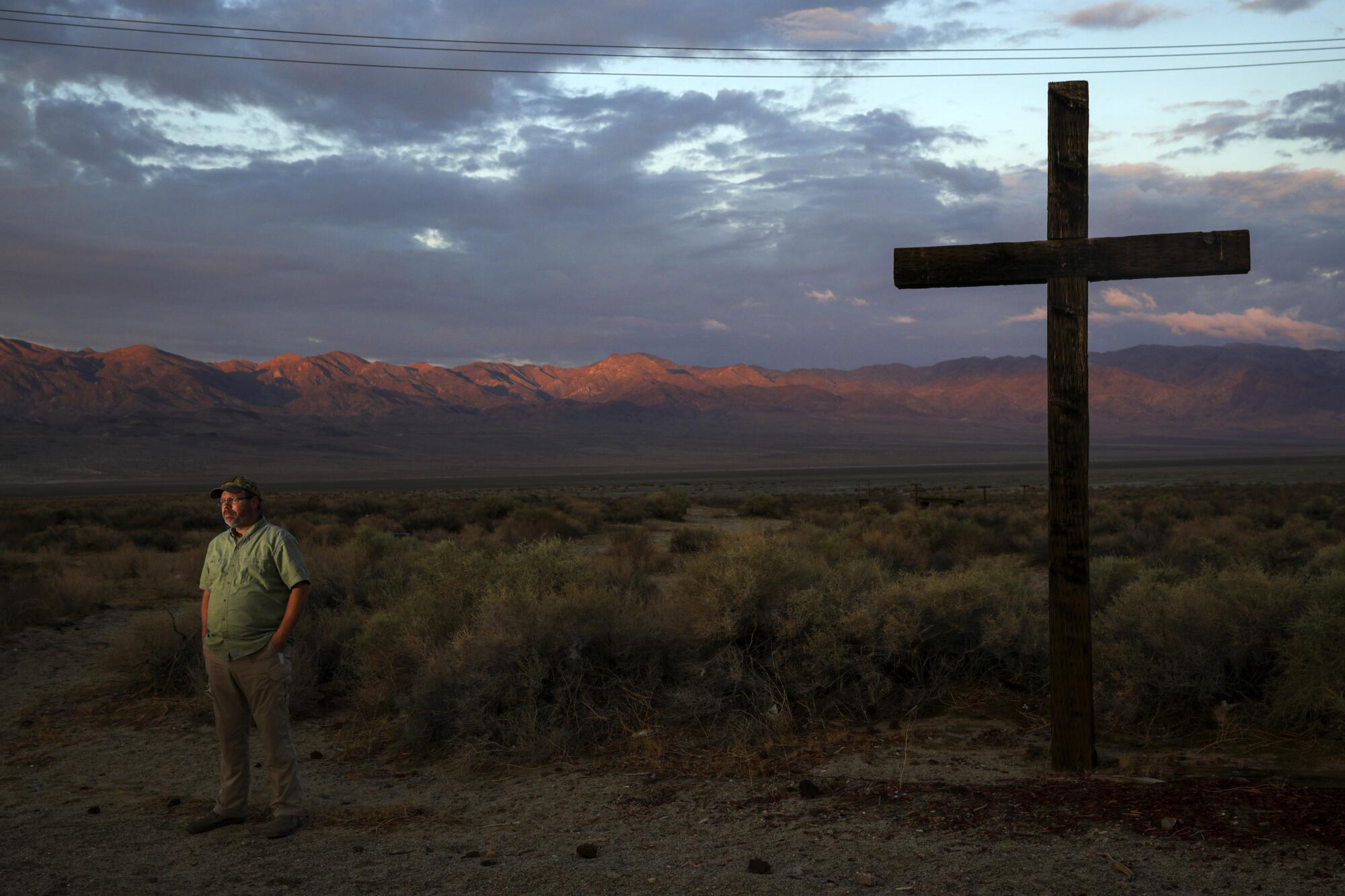
To help make its case, Mojave Pistachios has retained its own water resources consulting company that agrees that the basin is in overdraft but says that the groundwater authority has underestimated its size and depth by more than 95%.
Speaking before the groundwater authority in June, its principal hydrologist said that the basin is “huge with untapped water reserves” and that the water agency had “fabricated a groundwater storage volume … to give the impression of paucity when there is, in fact, abundance.”
At Sweet Girl Farms, Liset Garcia seeks to be as resilient as her sunflowers, as she tends a bustling fruit stand amid a dire dry period.
Milman with the University of Massachusetts is not surprised by the discrepancy. It means that the scientists who analyzed the valley used different sets of data. Any resolution, she said, needs “to understand why these two depictions of the basin differ.”
But, she also added, science alone cannot settle this dispute. Determining acceptable levels of water in an underground basin is a social question being asked in different contexts as climate change and drought upend familiar models of economic growth.
“Groundwater sustainability agencies and in some instances, the state or the courts will need to decide how many and whose wells will go dry and what changes to water quality and ecosystems are acceptable,” she said.
::
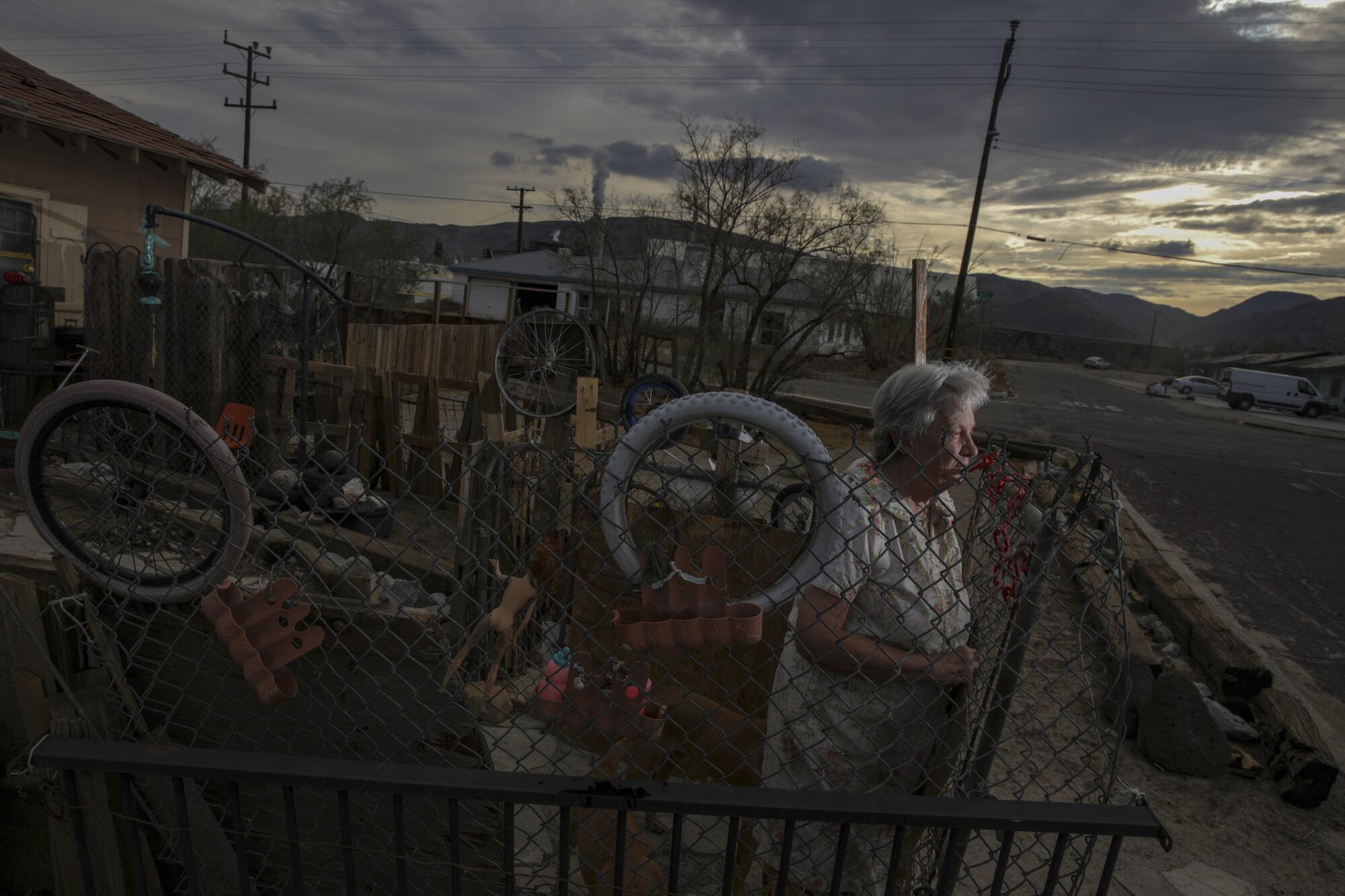
Ronnie Tolbert took a chair in the back of the Elks Lodge on Main Street. Almost 50 of her neighbors had turned out.
“Thanks for showing up,” said organizer Regina Troglin, who introduced her guests, field representatives from the offices of a local assemblyman, state senator and San Bernardino County Board of Supervisors.
Troglin, 33, moved to Trona in 2018 after living in a motorhome with her partner and daughter in Salton City. Her home, overlooking the Searles Valley, cost $8,500, and she was not about to move.
“Keep it as civil as possible,” she reminded everyone. “These are heated issues, and I know our comments can get a little hostile.”
Soon the room sparked with questions. Who gave the groundwater authority its power? Why was it charging Searles Valley Minerals so much? Wasn’t this taxation without representation?
“We’re elderly. What are we going to do? We can’t just start over.”
— Ronnie Tolbert, Trona resident
Tolbert had been wondering much of the same. After the earthquake, Trona felt forgotten. Some neighbors described the town as if it had been hit by the apocalypse. “You almost expect zombies to be walking down the street,” said one.
On Tolbert’s block of Lupine Street — where the mineral plant with its enormous coal barn rose at the end and shunting hopper cars thudded against one another — scores of homes are abandoned and boarded up.
Throughout Trona, nearly 60 homes are empty. Some have been claimed by squatters who moved in and moved on, vandalizing them along the way. Charred remains of others lie stacked on concrete foundations, a year after an arsonist hit the community.
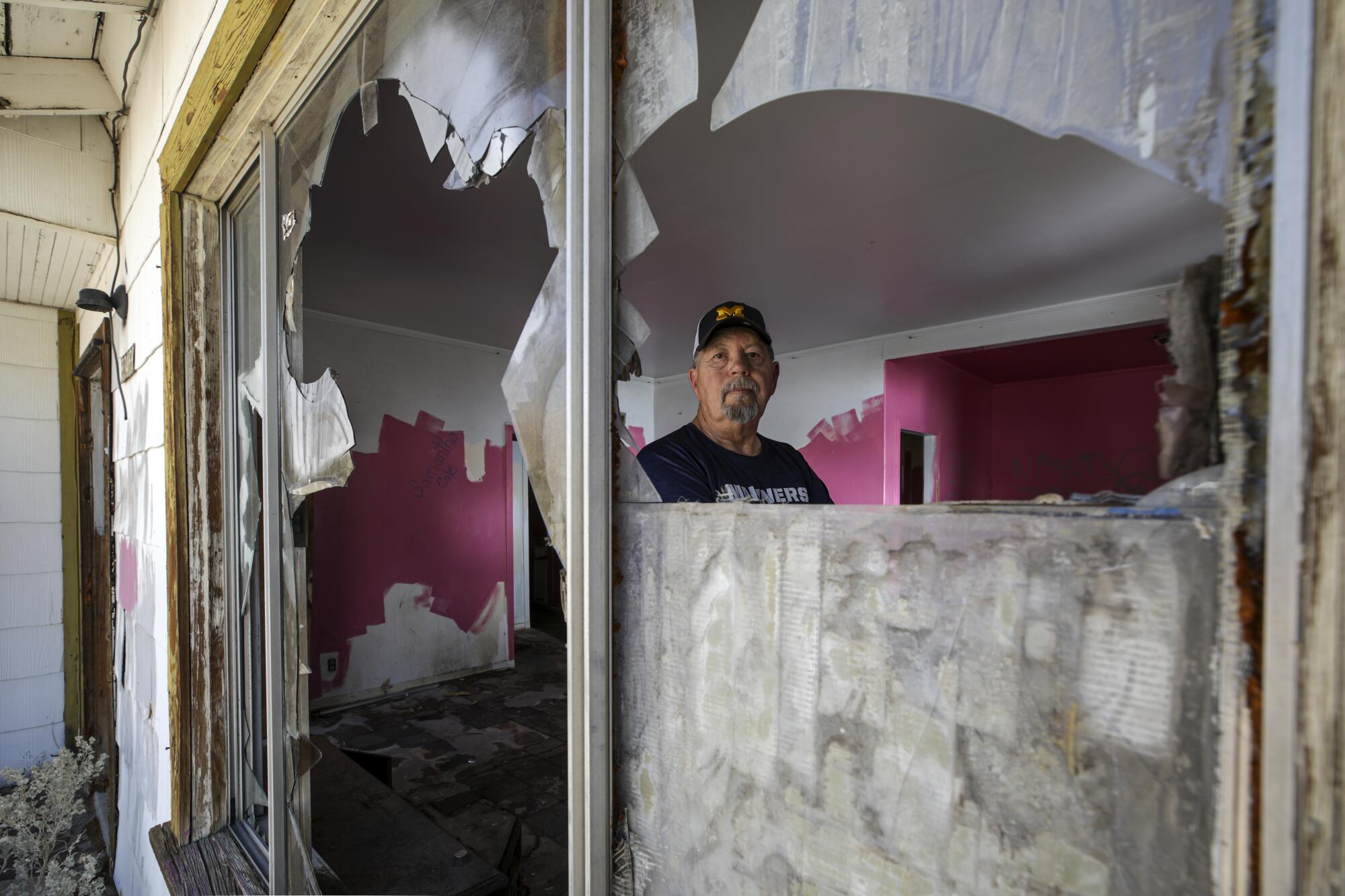
Still, Tolbert couldn’t imagine living any place else. She moved here from Montana in 1986, met Danny at the plant and raised 11 children in the house they are still busy repairing.
They had just put on a new roof. Siding from one of the abandoned homes now covers the plywood where the fireplace had stood, and she has two new front windows. One is stained glass, the other a glass table, and finally a little light was getting inside.
During a pause in the back-and-forth, Tolbert raised her hand.
“We’re elderly,” she said. “What are we going to do? We can’t just start over.”
She was thinking about Danny, home in bed, consumed by worry. She wanted to reassure him.
But she was afraid for herself as well, and only later admitted to what she was thinking if the town’s water got shut off.
“It would be hard to keep going,” she said, leaving it at that.
More to Read
Sign up for Essential California
The most important California stories and recommendations in your inbox every morning.
You may occasionally receive promotional content from the Los Angeles Times.
